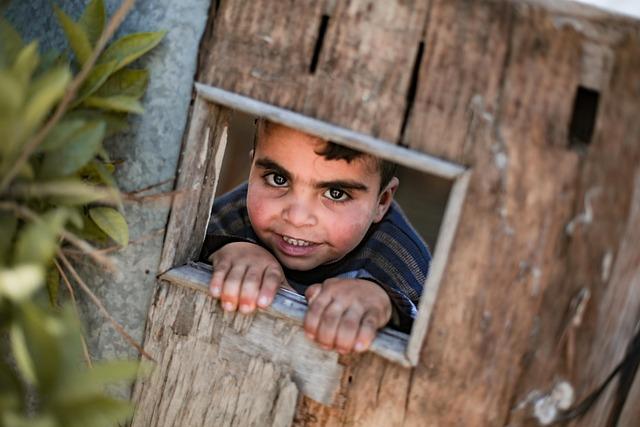In the besieged Gaza Strip, where years of conflict have severely weakened the health infrastructure, medical students are emerging as a crucial force in sustaining the region’s overwhelmed healthcare system. As Israel’s latest military offensive inflicts widespread destruction and casualties, these young trainees are stepping beyond the classroom to provide vital medical assistance amid growing shortages of professionals and supplies. This article examines how Gaza’s medical students are filling critical gaps in a health sector pushed to the brink by ongoing violence and blockade.
Gaza’s Medical Students Fill Critical Gaps in a Fragmented Health System
Amid the relentless strain on Gaza’s crumbling healthcare infrastructure, medical students have emerged as indispensable frontline responders. With many hospitals overwhelmed by casualties and a severe shortage of qualified medical personnel due to sustained conflict, these students have stepped into roles traditionally reserved for licensed professionals. Their efforts span from triaging incoming patients to providing critical care in emergency units, often working 12-hour shifts under perilous conditions. This grassroots mobilization highlights a fierce commitment to sustaining healthcare delivery amidst devastation.
These young medical practitioners face multifaceted challenges, including:
- Scarcity of medical supplies: Continuous power outages and disrupted supply chains constrain their ability to provide effective treatment.
- Fragmented health facilities: Coordination between damaged hospitals is minimal, requiring students to navigate a fragmented system independently.
- Psychological trauma: Exposure to mass casualties and personal loss complicates their mental well-being.
| Role | Hours Worked Daily | Primary Challenges |
|---|---|---|
| Emergency Response | 12+ | High patient volume, limited equipment |
| Patient Triage | 10 | Time-sensitive decisions, resource triage |
| Supply Coordination | 8 | Inventory shortages, logistical hurdles |
Challenges Facing Medical Trainees Amid Continuous Conflict and Resource Shortages
The ongoing conflict has thrust medical trainees in Gaza into an unprecedented frontline role, forcing them to confront the harsh realities of war-torn healthcare with limited preparation and scant resources. These students often find themselves balancing rigorous academic demands with the urgent need to provide emergency care amid hospital overcrowding and a shattered infrastructure. The constant threat of airstrikes and interruptions to electricity supply complicate their training, leaving many to learn critical skills in conditions that would overwhelm even seasoned professionals. Access to essential medical supplies such as antibiotics, surgical tools, and imaging equipment is sporadic at best, compounding the challenge of delivering effective patient care.
The strain on these trainees is further magnified by the psychological toll of witnessing widespread suffering and loss while striving to maintain their educational progression. Key obstacles include:
- Chronic shortages of clinical mentors due to staff displacement and casualties
- Interrupted communication with global medical networks and academic institutions
- Inadequate access to advanced medical technologies and simulation labs
- The need for rapid on-the-job learning in trauma and emergency medicine
| Challenge | Impact on Trainees | Response Strategy |
|---|---|---|
| Medical Supply Deficiency | Limited hands-on practice with standard procedures | Improvised use of alternative materials and community donations |
| Mentorship Shortage | Increased self-reliance and peer-to-peer training | Remote guidance via telemedicine when connectivity permits |
| Psychological Stress | Risk of burnout and mental health deterioration | Peer support groups and informal counseling sessions |
Urgent Calls for International Support to Sustain Gaza’s Emerging Medical Workforce
With hospitals and clinics in Gaza overwhelmed and healthcare personnel stretched to the breaking point, the region’s medical students have emerged as an indispensable lifeline. These young professionals, many still in training, are stepping into roles traditionally reserved for fully qualified doctors and nurses, performing critical tasks under extreme conditions. Their efforts, however, remain insufficient without sustained international intervention-access to medical supplies, training resources, and financial aid is urgently needed to prevent the collapse of Gaza’s fragile healthcare infrastructure.
Global support must be strategically coordinated to bolster this emerging medical workforce. Investment in the following areas is crucial:
- Provision of essential medicines and equipment to improve emergency response capabilities.
- Remote training programs to enhance practical skills despite restricted movement.
- Psychological support services to address trauma experienced by frontline healthcare workers.
- Financial grants to maintain medical education continuity amid ongoing conflict.
| Support Type | Urgency | Expected Impact |
|---|---|---|
| Medical Supplies | High | Immediate life-saving capacity |
| Training Programs | Medium | Improved skill sets & autonomy |
| Psychological Care | High | Reduced burnout and trauma |
| Financial Aid | Medium | Education sustainability |
Key Takeaways
As Gaza’s medical students continue to step into critical roles amid the ongoing conflict, their efforts highlight both the resilience of the territory’s healthcare system and the severe challenges it faces. With hospitals overwhelmed and resources scarce, these young professionals are providing essential support in a health sector pushed to the brink. Their commitment underscores a broader humanitarian crisis that remains deeply intertwined with the region’s political turmoil, emphasizing the urgent need for international attention and aid to prevent further deterioration of Gaza’s medical infrastructure.
